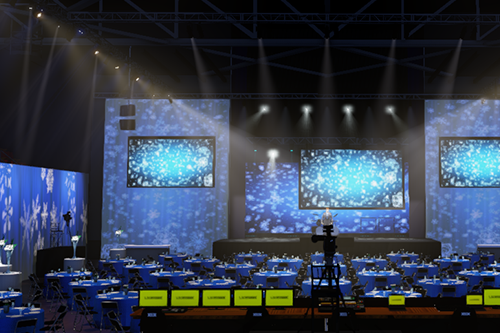Revolutionizing Audience Interaction Through Engaging VR Experiences within Real-time Productions
Revolutionizing Audience Interaction Through Engaging VR Experiences within Real-time Productions
Blog Article
Within the past years, virtual VR has emerged a potent tool for boosting audience engagement in real-time performances. This innovation enables viewers to immerse oneself in a three-dimensional environment, creating a distinct experience that conventional media cannot easily duplicate. By using VR, producers can move viewers into the core of the action, causing them sense as if they are integral of the performance. This groundbreaking approach not only enchants viewers but also opens up new possibilities for narrative and interaction.
One of the key advantages of employing VR in live performances is the capability to forge a greater interactive experience. Audiences can engage with the show in real-time, shaping the result or discovering different perspectives. For instance, in a stage production, viewers wearing VR headsets can select to pursue particular roles or segments, enabling them to tailor their experience. This degree of engagement cultivates a deeper bond between the viewers and the show, rendering it more unforgettable and significant.
Moreover, VR technology can improve the sight and sound aspects of a real-time performance. Using high-quality graphics and sound design, producers can build breathtaking settings that attract audiences in. This immersive quality can elevate the overall encounter, rendering it more captivating and pleasurable. For example, a musical performance can be converted into a rich encounter, where fans feel as if they are on stage with the artists. Such enhancements not only draw larger audiences but also promote return viewing, as audiences look to re-experience the thrill.
Alongside enhancing viewer involvement, VR can also offer insightful data for creators. Through examining how audiences engage with the digital setting, creators can collect data on audience preferences and behaviors. This information can inform future productions, helping to tailor material to more effectively satisfy the demands and wants of the viewers. As a consequence, VR not just enriches the current experience but also contributes to the evolution of live performances as a complete entity.
With the advancements progressing to advance, the potential for VR in live productions is vast. Ranging from stage shows and concerts to sports competitions and festivals, the opportunities are endless. By adopting this cutting-edge approach, producers can revolutionize the way audiences experience real-time performances. With an increasing number of site here producers explore the integration of VR, it is likely that we will see a change in how shows are crafted and delivered, ultimately leading to a more engaging and interactive prospect for real-time productions.